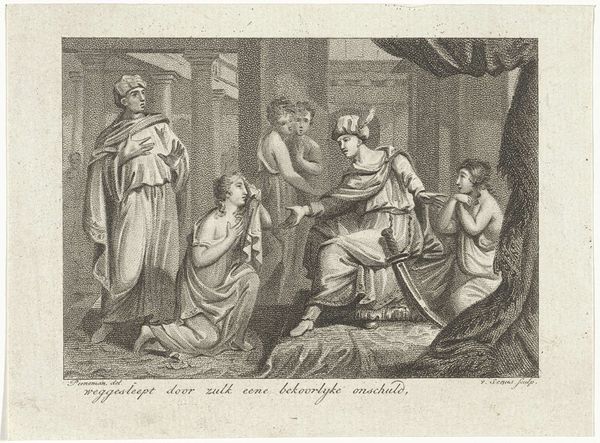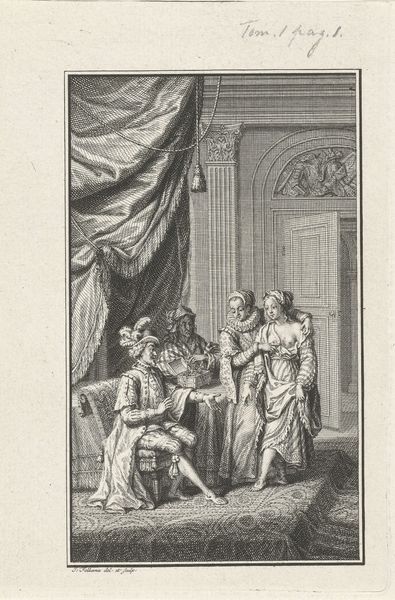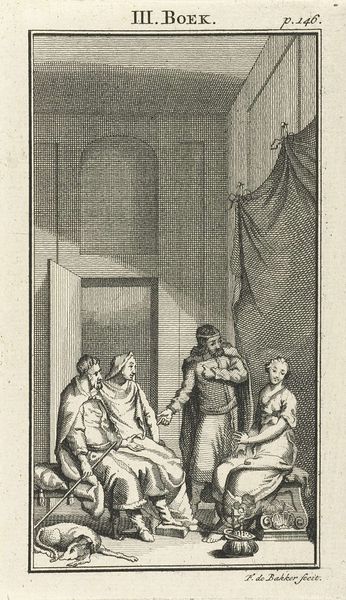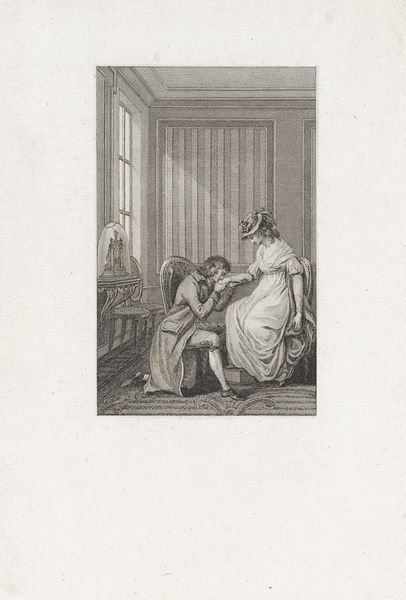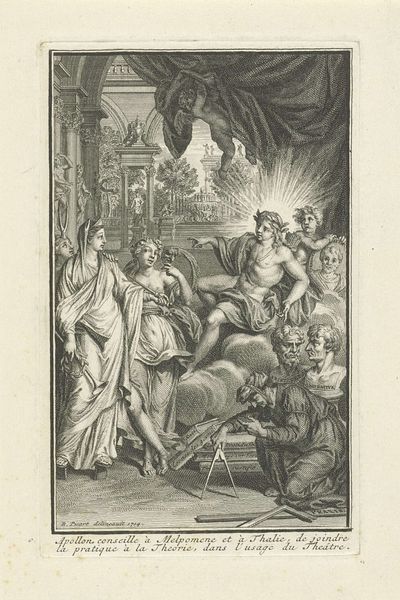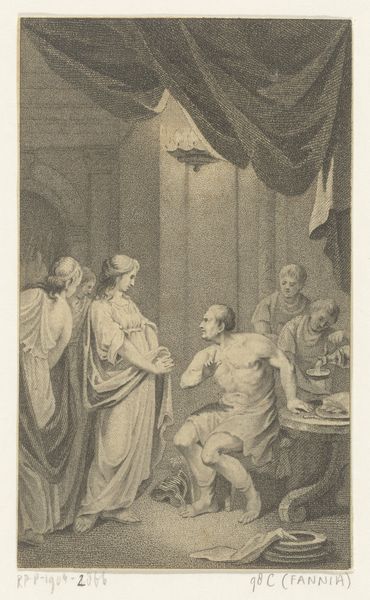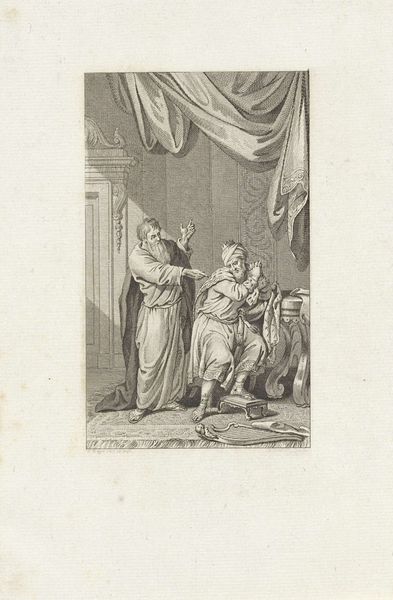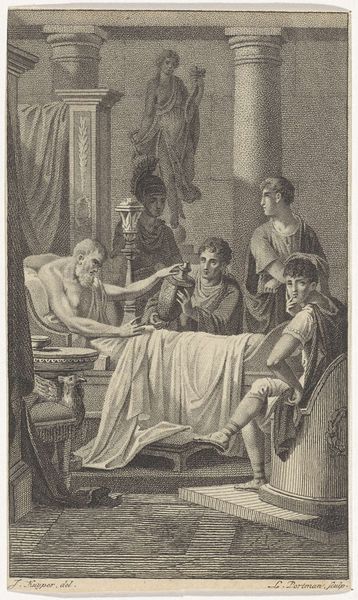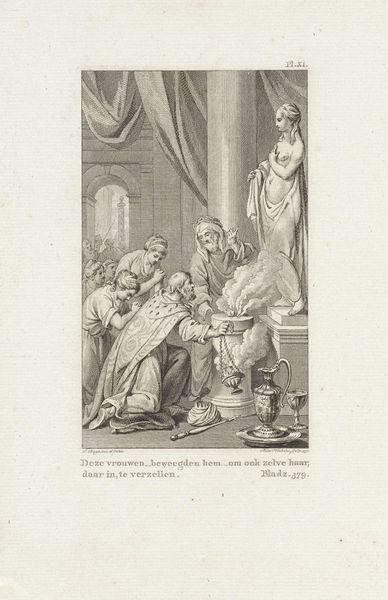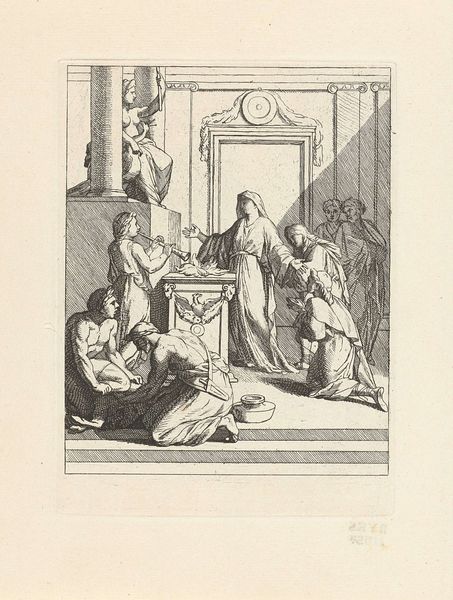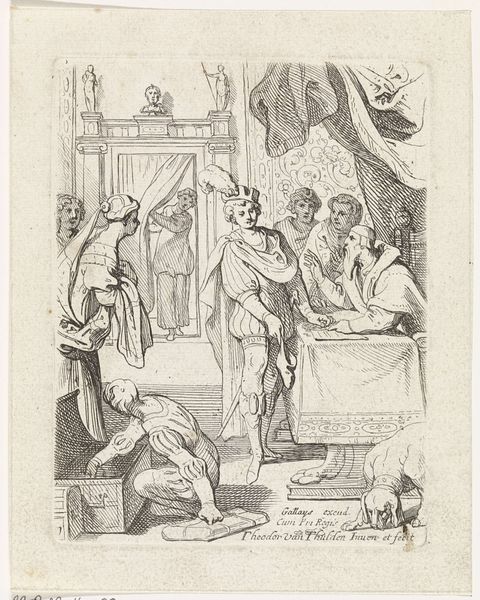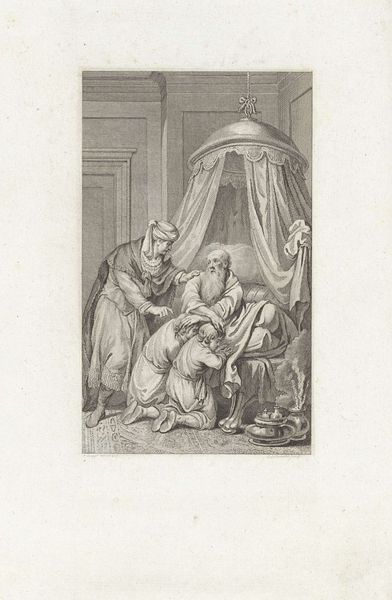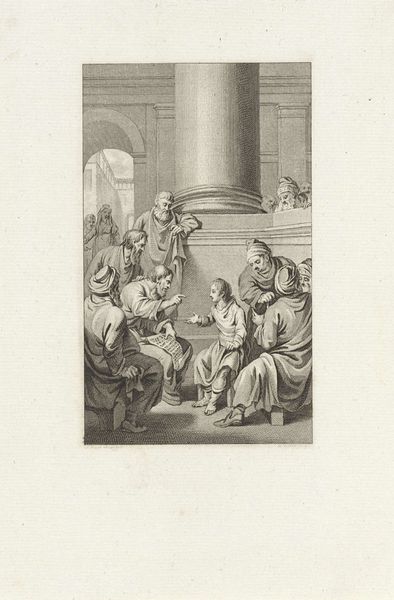
print, engraving
#
portrait
#
neoclacissism
# print
#
figuration
#
form
#
line
#
history-painting
#
engraving
Dimensions: height 204 mm, width 133 mm
Copyright: Rijks Museum: Open Domain
Editor: This is Ludwig Gottlieb Portman's 1798 engraving, "Marius in het huis van Fannia," now residing in the Rijksmuseum. The stark lighting really emphasizes the drama. I'm curious – what stands out to you most in this work? Curator: Oh, where to begin! It whispers tales, doesn't it? The rigid neoclassicism—Portman drank deeply from that well. The cool detachment, the noble subject… History painting was often about crafting these little morality plays. Look at Marius, disheveled and seeking refuge. What does it say about Fannia that she is willing to accept this defeated figure into her home, in defiance of the death sentence issued by Sulla? It's a bold stance against tyranny and the triumph of simple kindness. A radical message for a time of Revolution! What do *you* think this domestic scene suggests? Editor: I hadn’t quite placed it in the revolutionary mindset of the time, but I guess there’s almost a subversive message in finding nobility within supposed defeat, or within quiet domestic resistance. It almost feels like a direct response against a grand, performative kind of heroism. Curator: Precisely! It invites us to reconsider heroism itself, doesn't it? A question I find especially delightful, what do you find striking about its linear qualities? Editor: The figures feel like they’re defined more by outlines than by light and shadow, a bit like a classical frieze... It feels less about illusionism and more about a kind of stoic declaration. Curator: Beautifully put. The medium, engraving, lends itself to that clean, unwavering line, stripping away anything superfluous. It serves that air of determined moral rectitude doesn’t it? I wonder how many people Portman truly moved with it back then. Editor: It's a testament to how much context shapes our understanding. Now I look at it and it sings! Curator: Exactly! That’s art history for you – constantly changing how we perceive even still images, and shaping them from inert to resonant.
Comments
No comments
Be the first to comment and join the conversation on the ultimate creative platform.
